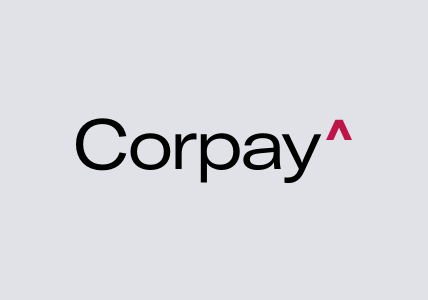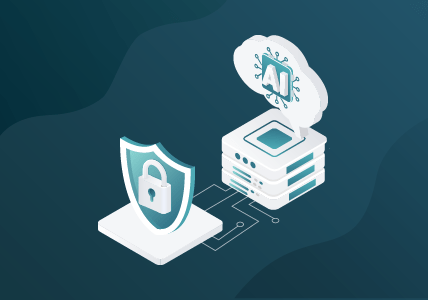The 5 C’s of Visibility
Updated October 28, 2021.
As part of our Visibility Schmizibility series, we’re taking a deep dive into what visibility really means when protecting your network, and why it pays to do your homework before choosing a network visibility provider. Before making your final decision, do some digging on what we like to call the “5 C’s of visibility.”
It’s 2020, but despite significant advances in enterprise infrastructure, organizations are still not safe from cyberattacks or immune to network downtime.
Accepting the reality that there will always be bad actors searching for new ways to breach your network and that every network has its weak links is a great first step — but then you need to actually do something about it.
Cue network visibility.
Network visibility allows you to see everything inside your network. It gives you an in-depth look at all of the moving pieces (traffic, applications, performance, analytics…the list goes on) so that you can easily pinpoint suspicious activity or performance glitches and make informed decisions about how to address these issues.
Think about it like this: Network traffic is the actual truth about what’s going on in your environment. Relying on data from the network elements themselves doesn’t work, as they may be compromised from a performance or security perspective (and in some cases, both).
Here are five important things — the 5 C’s — to keep in mind when choosing a network visibility provider.
1. Concept
You may be scratching your head, wondering why I’m about to cover the concept of visibility, but stick with me for a moment. Far too many security providers claim to offer total visibility when all they’ve really done is tack it on as a feature of a tool, like a firewall. Meanwhile, other providers are focused only on visibility for endpoints. But the problem with approaching visibility this way is that it simply doesn’t work. These methods are ineffective by design because they allow you to see only a piece of the puzzle instead of the whole picture.
Instead, think of visibility as a foundation to infrastructure design. It’s fundamental to the very stability of your network because without it, things can quickly fall apart.
Pro tip: Visibility is fundamental to ensuring the health of your network and should never be an afterthought. Make sure the provider you choose offers visibility as a foundational component, and not just as a feature of other tools.
2. Capacity
This is a big one, as the success of your company hinges on the speed of your network. It’s bad enough that most enterprise networks can’t keep up with expanding data loads, but it’s even worse when the tools designed to protect you are the very things slowing you down.
Your visibility provider should have the capacity to secure your network while also improving its performance. It’s a tall order and means that visibility must be implemented independently from the tools you use. Because when visibility gets packaged and sold as a tool, it almost always ends up degrading network performance and capacity. And capacity is a critical, non-negotiable feature when network links or segments are being upgraded to 40G, 100G and now 400G, to handle the continued growth in network traffic.
Most tools have 1G, 10G, 25G and 40G connectivity ports, and a small few also support 100G — but it’s going to be a while before any of them can handle 400G. Still, regardless of what port speeds are supported on a tool, the actual total throughput performance of the tool is typically less than 100G. This is where a great network visibility provider can truly save the day by converting from higher to lower port speeds, aggregating multiple links/ports and controlling the delivery of traffic to tools to accommodate the capacity of each tool.
Pro tip: To keep your business running smoothly while simultaneously managing security risks, look for a visibility solution that won’t slow you down.
3. Capability
Right along with capacity, it’s essential to make sure that visibility is offered as a core competency. You need to be able to see and process all of your traffic, from raw packets to applications. Not only that, but you’ll need to operate inline as well as out-of-band, all the while supporting a broad range of transformation functions like SSL decryption, de-duplication, metadata extraction, slicing and masking, among other core capabilities.
As we’ve seen, many providers toss around the term visibility because it drives interest in their products. They understand the criticality of visibility in enabling digital transformation. They know that everyone now wants it — but that doesn’t necessarily mean they understand it, let alone the many network functions it must be able to support.
In order for it to truly work, visibility must be a core capability that an organization possesses and is building into the infrastructure.
Pro tip: To fully reap the benefits of network visibility, make sure the visibility platform has all the capabilities necessary to allow all network and security tools to effectively operate within the infrastructure.
4. Cloud
Very few network visibility providers support hybrid infrastructure (physical, virtual, cloud) — but today this is an absolute must. And in those cases where hybrid infrastructure is supported, it is mostly done piecemeal. Vendors claim to have “a single pane of glass,” but this generally refers to visibility into a part of the hybrid infrastructure — so, a single pane of glass for public cloud or a single pane of glass for private cloud.
The challenge is that it is very hard to provide a true single pane of glass across the entire hybrid infrastructure, because this is very hard to do technically. It requires building the visibility platform on a single architecture that can span a very complex and diverse IT environment. And yet, without that common view, it’s impossible to provide full visibility across the modern IT stack, which is hybrid by definition.
Pro tip: Your network visibility provider must have a common architecture across hybrid infrastructure in order for you to see the whole picture.
5. Cost
And, of course, we can’t complete the list without mentioning cost. Even if you have unlimited budget, it’s just bad business to keep buying tool after tool when you have the opportunity to streamline. When done well, your visibility platform should actually save you money because it will offload unnecessary traffic and processing from tools, while also making those tools more effective.
Pro tip: Keep costs in check by opting for a holistic visibility solution instead of another tool.
Takeaway
Choosing a network visibility provider can be daunting, especially when there is still a lot of confusion in the market regarding the term and its requirements. Use the “5 C’s” as a guide to get a head start and deliver on the promise of true network visibility.
For more tips on network visibility, head to our blog or get in touch with us today.
Featured Webinars
Hear from our experts on the latest trends and best practices to optimize your network visibility and analysis.

CONTINUE THE DISCUSSION
People are talking about this in the Gigamon Community’s Networking group.
Share your thoughts today








